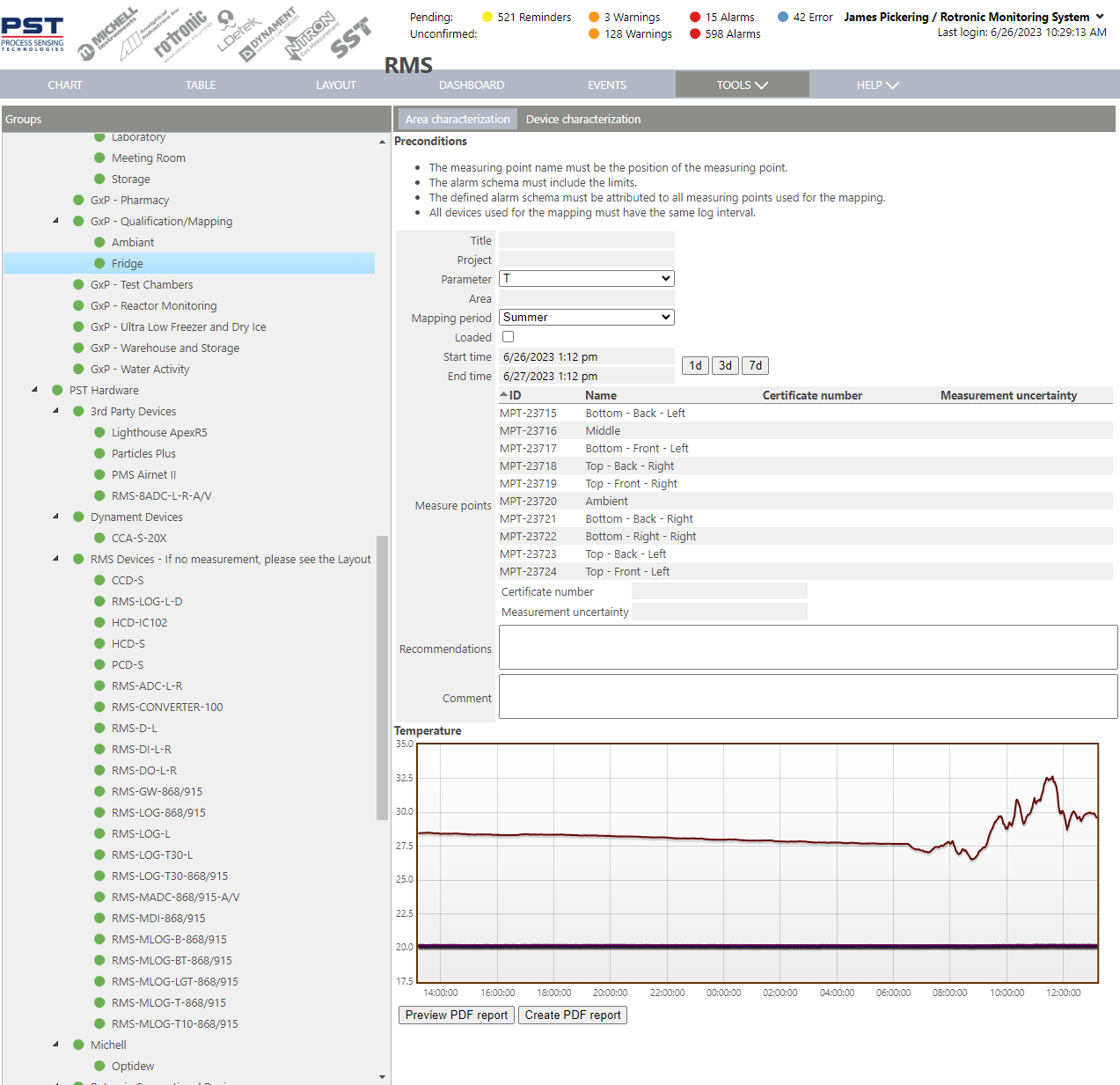Print Screen 1 |
 |
Preconditions:
•The measuring point name must be the position of the measuring point.
•The alarm schema must include the limits.
•The defined alarm schema must be attributed to all measuring points used for the mapping.
•All devices used for the mapping must have the same log interval.
Parameter entry:
•Title: The user can input a title for the area characterization.
•Project: The user can input a project for the area characterization.
•Parameter: select from either temperature (T) or temperature and relative humidity (T+H).
•Area: The user can input an area for the area characterization.
•Mapping Period: select from Summer, Winter, Area modification or Other.
•Loaded: select the tick box if the area is loaded. If a percentage is required, this can be added to the comments.
•Start time: The user can define when the area characterization started.
•End time: The user can define when the area characterization stopped.
It is possible to select predefined times: 1 day, 3 days and 7 days. The start and end time can also be changed directly by zooming in the chart.
•Measure points: The measure points are automatically populated based upon the group selected.
•Certificate number: A calibration certificate number can be added.
•Measurement uncertainty: A measurement uncertainty can be added (the measurement uncertainty will be shown directly in the report).
•Recommendations: Once the data reviewed, recommendations can be added.
•Comments: The user can add comments.
Report details:
•Report:
oReport ID (DOC-XXX), name.
•Qualification date:
oCreation time and date, timezone.
•Project:
oName.
•Area characterization:
oGroup, area, mapping period, limits.
•Characterization overview:
oNumber of measuring points, interval, from/to/duration, loaded.
•Conclusion (per temperature and optionally humidity):
oOverall average.
oLowest & highest values (value & date/time) per measure point.
•Measure point overview (per temperature and optionally humidity):
oPer measure point:
▪Position/Name, measuring point number (MPT-XXX), serial number (only when using digital probes), device number (DEV-XXX), device serial number, calibration certificate, measurement uncertainty.
•Measure point data overview (per temperature and optionally humidity):
oPer measure point:
▪Position/Name, measuring point number (MPT-XXX), measurement count, average, minimum, maximum, standard deviation, mean kinetic temperature (only for temperature).
•Measure point deviation overview (per temperature and optionally humidity):
oPer value out of limits:
▪Position/Name, measuring point number (MPT-XXX), value, date/time.
•Measure point graphical overview (per temperature and optionally humidity):
oPer measure point:
▪Graphical chart.
•Recommendations.
•Comments.
•Signatures.
•References (USP1079).
•Statistical overview (glossary).
Updated: 13.02.2025.